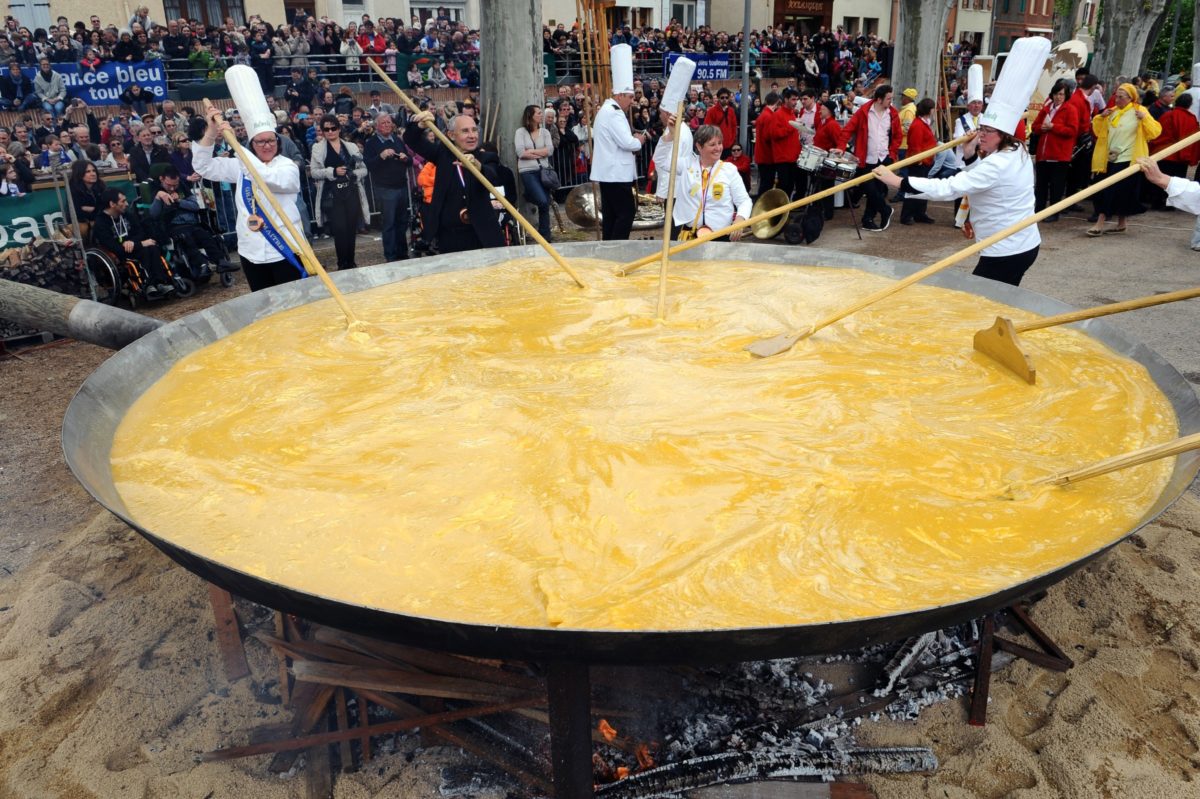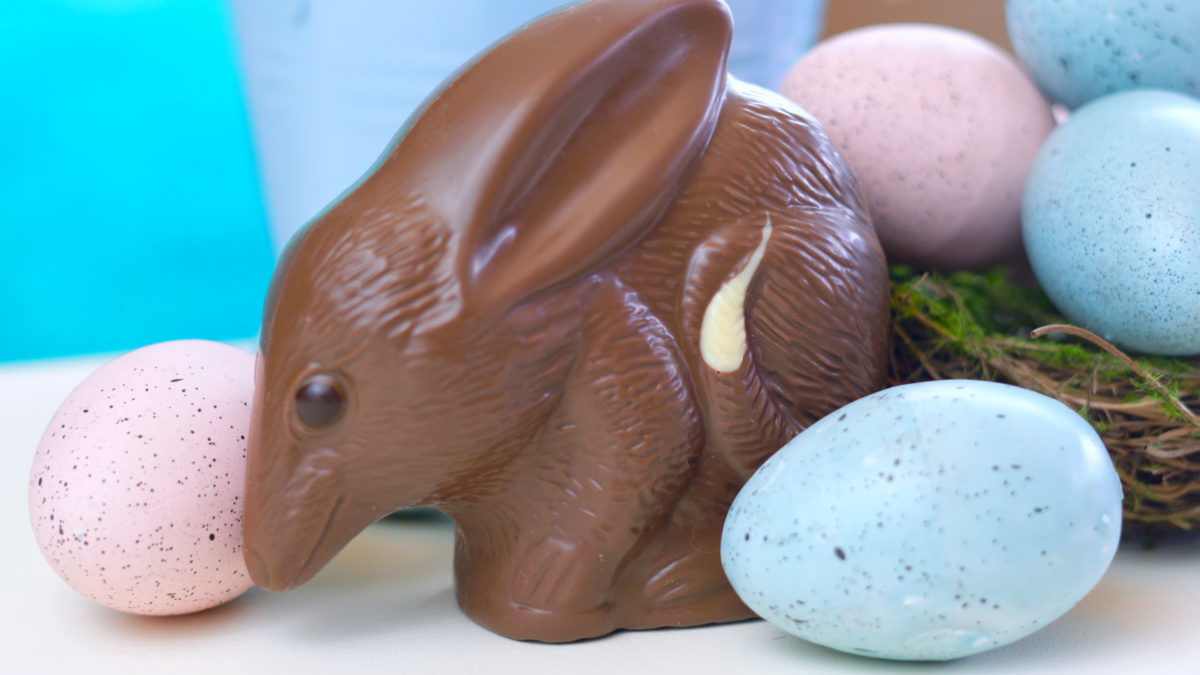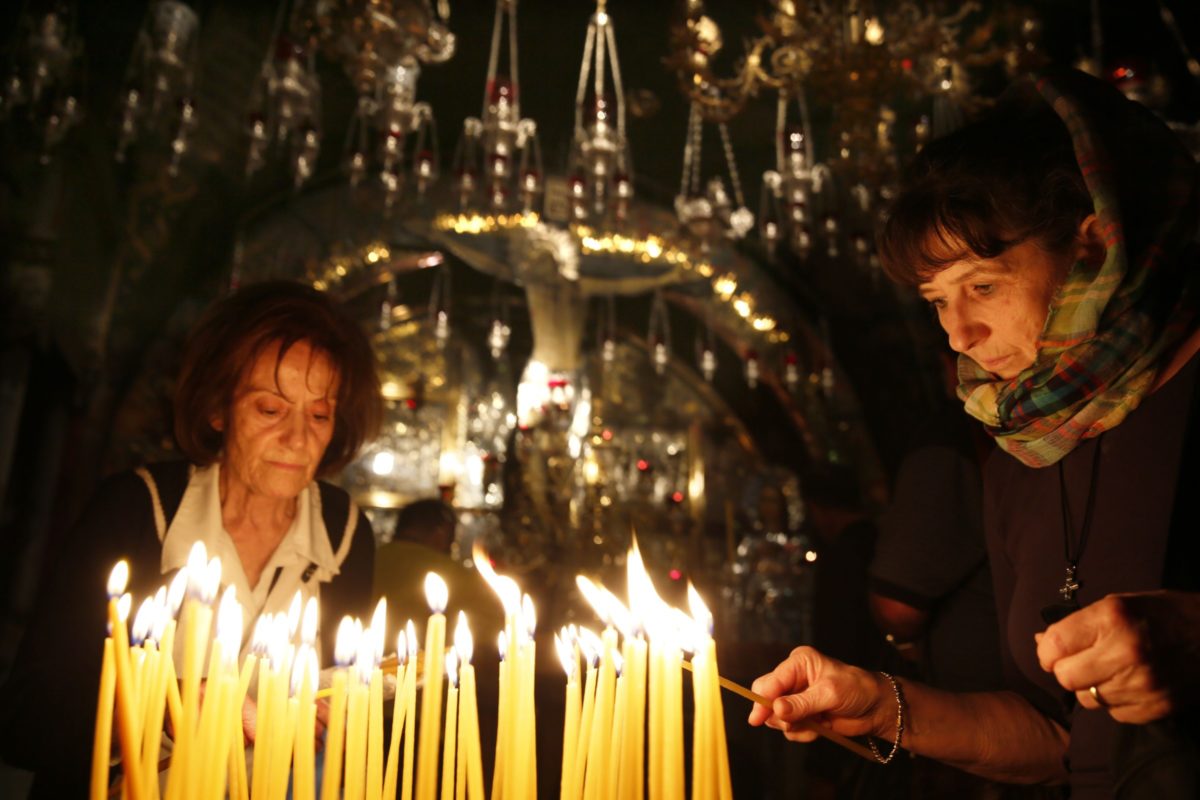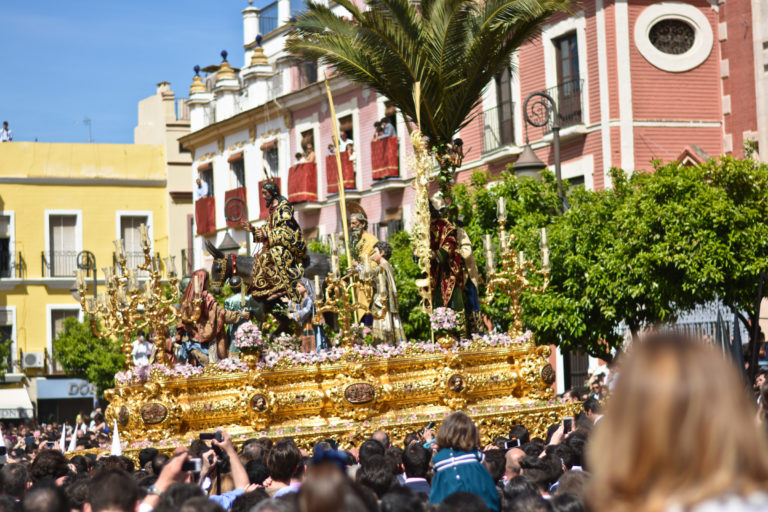In the United States, Easter is about family, going to church, making some ham and hunting for Easter eggs. But Easter traditions around the world vary widely. Their as vibrant and interesting as the locations and cultures they represent.
Discover some history below and you might even find some Easter traditions to adopt for your family.
United States: Bunnies, eggs and baskets
Rabbits have always symbolized fertility and new life (particularly in pagan rituals), but exactly where the Easter bunny hopped into American culture is unclear. The tradition as we know it might have first come across the pond with 18th-century German immigrants, whose children made grassy nests for a mythical hare who was said to lay colored eggs. Over time, the rabbit’s deliveries grew from colored eggs to chocolate bunnies and other treats in brightly colored baskets.
MORE: What is the origin of the Easter bunny?
The tradition of decorating eggs for Easter, however, likely dates back to the 1300s. Eggs were a forbidden food during the period of penance and fasting known as Lent, and people painted and decorated the delicious little orbs to eat on Easter morning to celebrate its end. The prominence of eggs in the Easter tradition carries through in the many egg-shaped candies that fill the baskets of lucky children on Easter morning.
Greece: Bread, goose eggs and lamb
Preparation for the holy Easter weekend begins with baking tsourekia, a sweet Easter bread that’s braided to represent the holy trinity of Father, Son and Holy Spirit.
Easter is far from a completely somber affair here, though. Boiled eggs take on a red hue to represent the risen Christ’s blood. On Easter morning, people take turns cracking the eggs on top of one another’s heads. The person with the egg says, “Christos anesti!” (meaning, “Christ has risen”), and the other person — the one who may or may not have a slightly sore spot on the noggin — responds, “Alithos anesti!” (“Indeed, he did!”). The game keeps going until only one person is left with an uncracked egg — the winner, who will be blessed with good luck for the whole year.
Later on in the day, lamb is the centerpiece of a feast that marks the end of the 40-day Lenten fast that Greek Orthodox people undertake to mourn Jesus’ death.
France: Flying bells and rolling eggs
In lieu of the Easter bunny, Kids in France have “flying bells.” French Catholic tradition says that, on Good Friday (the Friday before Easter), all church bells in France sprout wings and fly down to the Vatican — carrying all the grief for Jesus’ crucifixion with them — for a blessing from the Pope. No church bells ring between Friday and Easter morning, after which they return with candy goodies for well-behaved children.

In the town of Bessieres, 10,000 people gather on Easter Monday to make a giant omelet consisting of 15,000 fresh eggs; the operation takes a 4-meter pan, 40 cooks, and extra-long sticks. This unusual tradition dates back to Napoleon Bonaparte and his army, who once spent the night in this town. After enjoying an omelet made by a local innkeeper, Napoleon ordered the townspeople to gather all their eggs and come together to create a giant omelet to feed his army.
While France does love its chocolate Easter eggs, some of its traditions use the real thing. One older custom is an egg-rolling competition in which participants roll raw eggs down a slope. The surviving egg is dubbed the “victory egg,” symbolizing the stone that Jesus rolled away from his tomb on Easter morning.
Italy: Palm leaves, exploding carts and rolling cheese
The two weeks leading up to Easter Sunday are among the busiest times of the year in Italy — especially in Rome, a popular Holy Week destination for pilgrims. Elsewhere, rituals and traditions abound — some dating back hundreds of years.
On the Sunday before Easter, palm leaves and olive branches are placed outside houses and on Easter cakes. They represent the palm branches the crowd scattered in front of Jesus as he rode into Jerusalem.
In Florence, an antique cart is packed with fireworks and set on fire on Easter morning. The tradition, known as scoppio del carro (“explosion of the cart”) dates back more than 350 years. The bigger the explosion, the better year it portends.
On the day after Easter (Pasquetta, or Little Easter), some areas hold a cheese-rolling competition dubbed La Ruzzola. The players (giocatori) use a leather strap and a stick of wood to roll 9-pound rounds of Pecorino cheese along a course. Spotters run alongside the cheese to mark where it falls. The winner — the player who completes the race course in the fewest strokes — gets the cheese.
Poland: Blessed baskets and water guns
In Poland, Holy Week precedes Easter with traditions that are celebrated not just here, but in Polish communities around the world. One such custom is the Blessing of the Easter Baskets. On Holy Saturday, families bring baskets of food such as eggs, bread, meat and butter to church, where priests bless it in preparation for the Easter feast.
The day after Easter — Śmigus-Dyngus (Wet Monday) — is when the real fun begins. Young boys form groups and hunt for girls to douse with water using water guns, buckets and any other means available. A good soaking portends that the girl will get married within the year.
Australia: Not rabbits
The Easter bunny is not terribly popular in Australia. In fact, because of the destruction rabbits caused to native animals and habitats when European settlers introduced them to the country, they’re considered pests. Instead, Australians are embracing the endangered native bilby — with its big, soft ears and long nose — as a cute, cuddly Easter symbol. Bilby-shaped chocolates and merchandise are widely available, with some manufacturers donating proceeds to bilby conservation projects.

In Sydney, the Royal Easter Show provides plenty of fun for festivalgoers of all ages. First held in 1823, the show is Australia’s largest annual event, attracting close to 900,000 people each year. It brings city and country folk together to enjoy events like sheep-shearing and wood-chopping. Competitors vie for titles in animal shows and produce exhibits. There’s loads of food, shopping and, for the adrenaline junkie, hair-raising carnival rides.
India: Gifts and celebrations
The 2.5 percent of India’s population that’s Christian celebrates Easter with great fanfare and religious vigor, preparing elaborate arrangements for display. Although they don’t decorate Easter eggs, Christian Indians are well aware of the tradition and purchase beautifully decorated Easter eggs and chocolate bunnies from stores to give to children. Adults exchange gifts, too; colorful lanterns and representations of the Holy Cross are traditional choices.
In the small western state of Goa, Easter is marked by lively carnivals, elaborate street plays, dances, and songs.
Spain: Parades and processions
Holy Week (Semana Santa) is the biggest religious celebration of the year in Spain, with lots of eating and drinking. People carry huge, church-blessed palm or olive branches in parades all over the country. See our image at the top of this article for a glimpse at some of the parades.
MORE: 15 Easter decorating ideas
Elaborate reenactments of Jesus’ crucifixion are common, too. Verges, a town in Gerona, hosts the Danza de la Muerte de Verges (Dance of the Death of Verges), one of the most curious scenes of Holy Thursday. After a dramatization of Jesus’ life, the procession of the Passion begins, during which five people dressed as skeletons perform a simple but impressive dance. Each skeleton wears an object that represents the passing of time and death: a scythe, a clock without hands, a banner or two plates of ash. Various hooded people wearing skull masks, carrying torches and marching to the rhythm of drumbeats follow. This tradition dates back to the 14th century, when the city of Verges suffered an outbreak of the Black Death — which was interpreted as a divine punishment for a village that had neglected its Christian obligations.
Israel: Sacred light
Easter processions are popular in Israel, too. Groups travel to Golgotha — the Aramaic name for the location where Jesus was crucified — to mark the route Jesus followed to his death, in a procession known as the 12 Stations of the Cross. It’s believed to be a holy practice by the faithful who come from all around the world to participate.

The procession ends at Jesus’ tomb, which, at 1 o’clock, a priest enters and shuts the doors. Lights all over the town are turned off, and later, when the church bells ring, the priest comes out with a blazing torch. People then light candles from this holy fire.
The United Kingdom: Nutty and uncracked
If you’re in the little town of Bacup in Lancashire for Easter Saturday, you might suddenly find yourself surrounded by people dancing in formation, wearing bells on their legs and dark makeup. Welcome to the Nutter’s Dance! Since 1857, this strange tradition has been led by a man cracking a whip — the Whiffler, or Whipper-In — to fend off evil spirits. Men wearing dark makeup and red and white skirts follow, disguised to keep themselves free from demons.
Egg jarping is another peculiar Easter tradition among the British. It’s a simple game: One person bashes a the pointy end of a hard-boiled egg on that of another egg belonging to an opponent. Whoever is left with the intact egg is the winner. The city of Peterlee in the county of Durham actually hosts an annual World Jarping Championship, with strategies, strict rules — and a lot of cracked shells.









